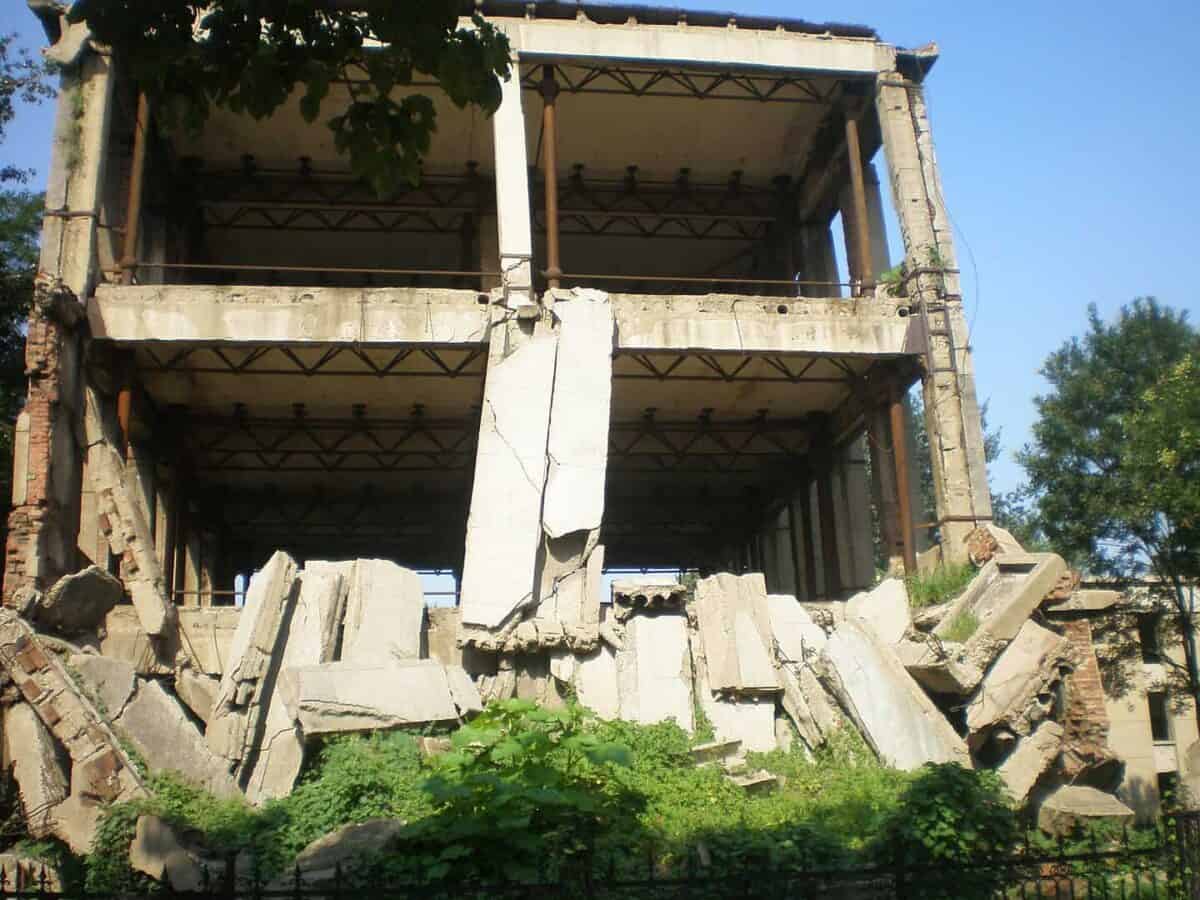The United States has experienced numerous natural disasters, but none quite like the cataclysmic event that struck Alaska in 1964. Known as the Great Alaska Earthquake, this seismic phenomenon stands as the most powerful earthquake ever recorded in US history. It not only reshaped the physical landscape of Alaska but also profoundly impacted the scientific community’s understanding of earthquakes. As we delve into this historic event, we unravel the story of nature’s unparalleled force and the lasting implications it had on seismic science and emergency preparedness.
Geographical Context Understanding Alaska’s Tectonic Setup

Alaska’s unique position on the Pacific Ring of Fire makes it particularly susceptible to seismic activity. This region is characterized by the convergence of several tectonic plates, including the Pacific, North American, and Juan de Fuca plates. The constant movement and interaction of these plates create significant geological activity, leading to frequent earthquakes and volcanic eruptions in the area.
The Fateful Day March 27, 1964

On March 27, 1964, at 5:36 PM local time, the ground began to shake in what would become a history-defining event. Registering a staggering magnitude of 9.2 on the Richter scale, it was the second most powerful earthquake ever recorded globally. Lasting for approximately four and a half minutes, the earthquake unleashed an immense amount of energy, causing widespread destruction across south-central Alaska.
The Immediate Effects of Ground Ruptures and Land Subsidence

The earthquake caused dramatic ground ruptures, some extending as far as 620 miles, and vertical displacements ranging up to 38 feet. This massive seismic activity altered the landscape dramatically, with some areas experiencing uplift and others subsiding significantly. Towns like Seward and Valdez, located near the epicenter, bore the brunt of these earth-shattering changes.
Tsunami Impact Waves of Destruction

As a consequence of the earthquake, several tsunamis were generated, impacting coastal areas across the Pacific Ocean. These tsunamis reached as far as the coasts of Hawaii and Japan. In Alaska, the tsunamis caused widespread damage, particularly in the ports of Valdez and Seward, where waves reached heights of over 100 feet.
Human Toll A Tragic Loss of Life

Despite the extraordinary magnitude of the earthquake, the relatively low population density in the affected areas limited the death toll to 131 people. Many of these fatalities were attributed to the tsunamis rather than the earthquake itself. The tragedy underscored the need for better preparedness and response strategies in regions prone to seismic activity.
Economic Repercussions A Devastated Infrastructure

The economic impact of the earthquake was profound, with damages estimated at around $2.3 billion in 1964 dollars (equivalent to over $21 billion today). Key infrastructure elements, such as roads, bridges, and buildings, were severely damaged or destroyed. The ports, crucial for trade and transportation in Alaska, experienced near-total destruction, significantly disrupting the economy.
Scientific Breakthroughs Advancements in Earthquake Understanding

The Great Alaska Earthquake provided invaluable data that contributed to seismic research advancements. Scientists gained greater insight into tectonic plate interactions and the mechanics of subduction zones. This event also led to significant improvements in seismic monitoring and the development of more accurate models for predicting earthquake impacts.
Regulatory Reforms Strengthening Building Codes

In the aftermath of the earthquake, there was a nationwide push to improve building codes and construction practices to better withstand seismic forces. Alaska implemented stringent regulations to ensure new structures could endure future seismic events. These reforms set a precedent for other earthquake-prone regions across the United States.
Emergency Preparedness Enhancing Response Strategies

The disaster highlighted the critical need for effective emergency response plans. It prompted authorities to develop comprehensive disaster response strategies, including early warning systems and public education campaigns. These measures aimed to minimize future loss of life and property damage.
Public Awareness Educating Communities

The 1964 earthquake raised public awareness about the risks of living in seismically active areas. Educational campaigns focused on teaching residents how to protect themselves during earthquakes and tsunamis, emphasizing the importance of preparedness in saving lives.
Legacy A Momentous Event in Seismic History

The Great Alaska Earthquake remains a defining moment in the history of seismic studies and disaster preparedness. Its impact reverberates through the scientific community, regulatory frameworks, and public consciousness. The lessons learned from this natural disaster continue to inform our approach to managing seismic risks today, ensuring that future generations are better equipped to face such formidable natural forces.
Conclusion: Lessons Learned and the Path Forward

The 1964 Great Alaska Earthquake stands as a sobering reminder of nature’s immense power and the vulnerabilities inherent in human settlements. As we reflect on this historic event, we recognize the profound advancements it spurred in scientific understanding and emergency preparedness. Through these lessons, we are better equipped to face the uncertainties of the future, striving to protect communities and save lives in the face of nature’s unpredictable wrath.
- The Strongest Earthquake Ever Recorded in the US - August 11, 2025
- 10 Hidden Caves in the US That Few People Have Ever Explored - August 11, 2025
- 10 Birds of Prey You Can Spot in the U.S. - August 11, 2025

